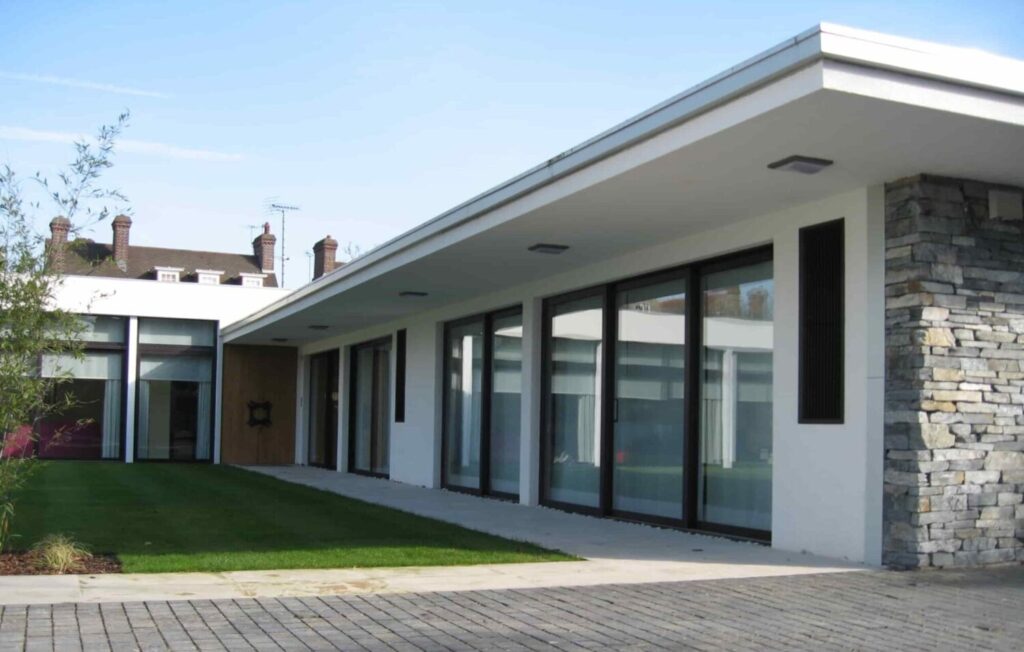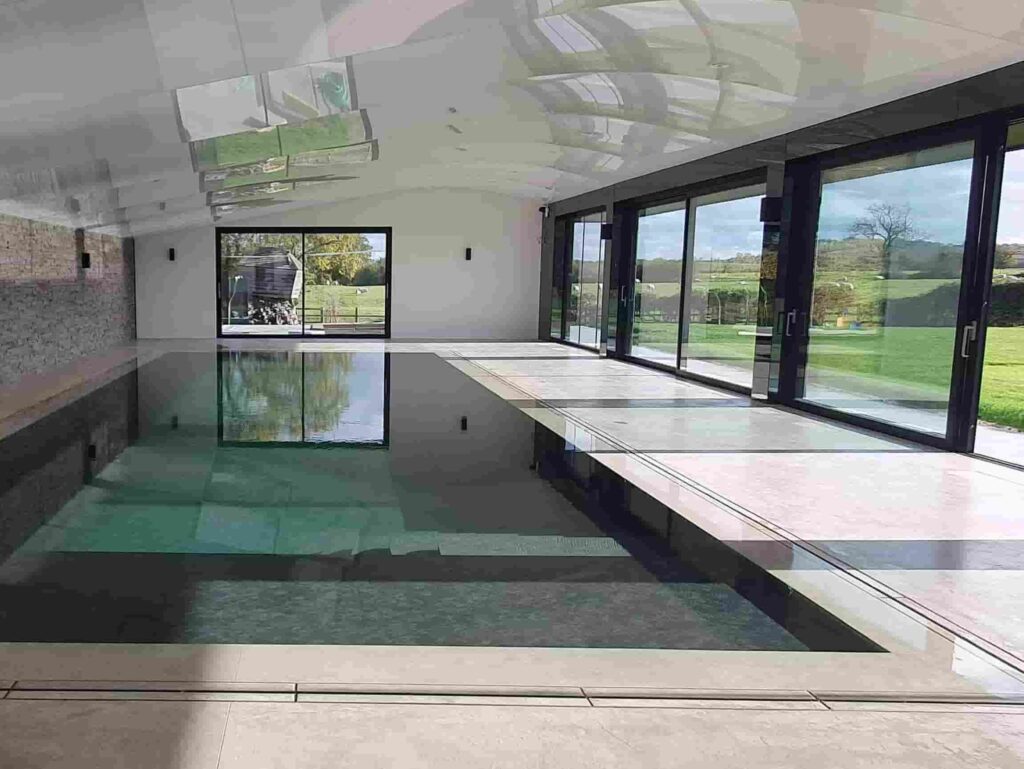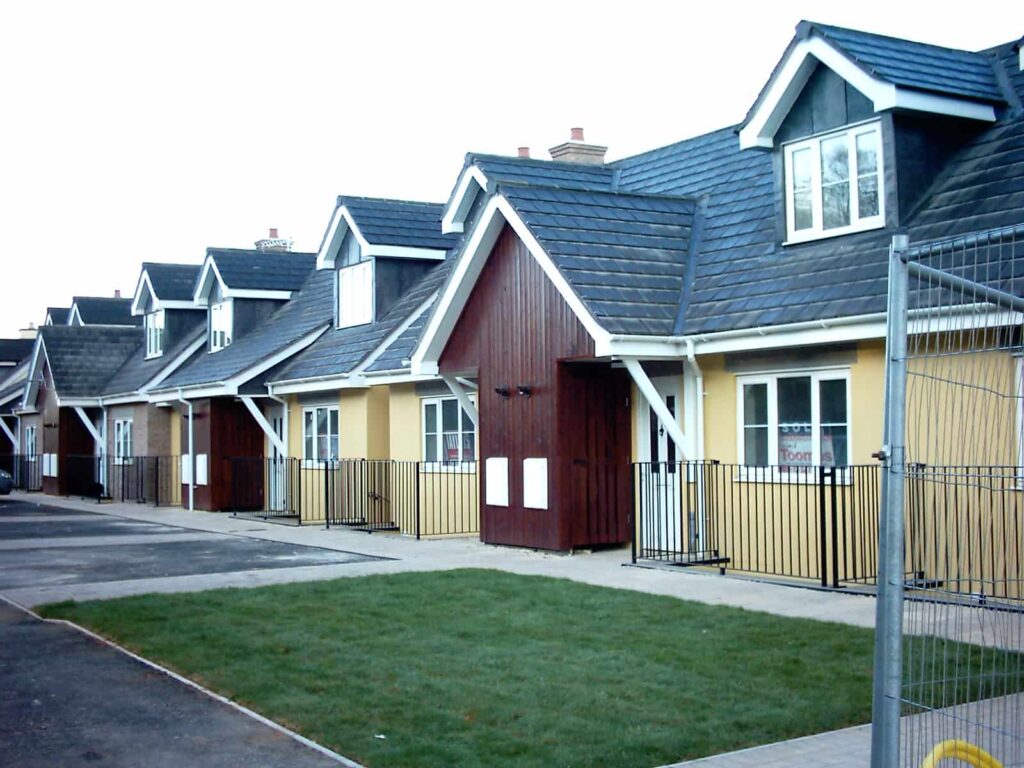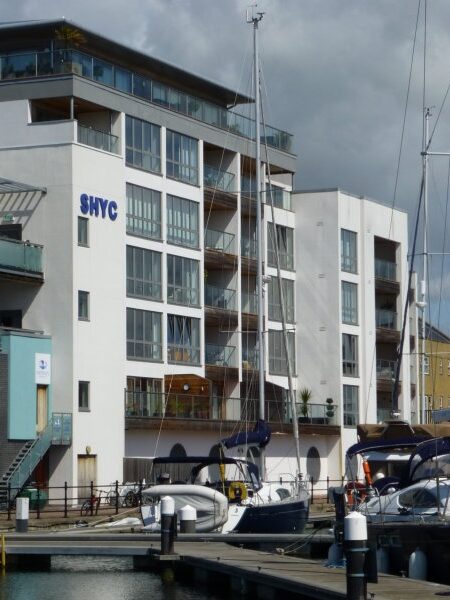ICF Costs
There is a mistaken impression that Insulated Concrete Formwork is an expensive method of construction. Indeed, simple material cost comparisons are misleading and to identify the true price to build a house in the UK overall budgets must be identified.
In fact, ICF Construction offers the most economical solution for most building projects.
Price To Build A House (UK)

Parameters
It is not easy to directly compare ICF costs with cavity wall construction due to the number of variables involved. However, we have broken this down to demonstrate the overall price to build a house in the UK.
*Foundation and roofing costs will be similar for both types of construction.
Results
Interestingly, this analysis shows that a rendered cavity wall house is not much cheaper than a cavity house with a brick skin.
But ICF units are definitely the cheapest form of construction for a rendered house because of the saving in scaffolding costs.
Typical House with brick facing
This is a comparison of brick wall and ICF costs in the construction of a detached house:
Self-build house costs will reduce the cost per square metre by about £9,000.
|
Cavity Wall Cost
|
Cost £ / m2
|
ICF Costs
|
Cost £ / m2
|
|---|---|---|---|
|
Facing Bricks |
50 – 100 |
ICF forms for 150mm wall |
50 – 60 |
|
Cavity Insulation |
25 – 30 |
Concrete £100 /m3 |
15 |
|
Lightweight blockwork |
20 – 25 |
ICF Installation |
40 – 50 |
|
Labour @ 8 m2 / day (Bricks) |
35 – 40 |
Facing Bricks / m2 |
50 – 100 |
|
Labour @ 20 m2/day (l/w blocks) |
15 – 20 |
Labour @ 8 m2 / day (Bricks) |
35 – 40 |
|
Total cost per m2 |
145 – 215 |
Total cost per m2 |
190 – 265 |
|
Total costs |
26k – 39k |
Total ICF costs |
34k -48k |
Typical House with render
If the facing bricks are replaced with render an entirely different result is obtained. This is a comparison of the wall costs of:
Self-build house costs will reduce the cost per square metre by about £9,000.
|
Cavity Wall
|
Cost £ / m2
|
ICF Costs
|
Cost £ / m2
|
|---|---|---|---|
|
Inner skin of lightweight blocks |
20 – 25 |
ICF forms for 150mm wall |
50 – 60 |
|
Cavity Insulation |
25 – 30 |
Concrete £100 /m3 |
15 |
|
Outer skin of lightweight blocks |
20 – 25 |
ICF Installation |
40 – 50 |
|
Labour @ 10 m2/day (l/w blocks) |
20 – 30 | ||
|
Render |
50 – 75 |
Render |
50 – 75 |
|
Total cost per m2 |
135 – 185 |
Total cost per m2 |
155 – 200 |
|
Total costs |
24k – 33k |
Total ICF costs |
28k – 36k |
|
Scaffolding (12 weeks) |
12k – 18k |
Scaffolding (4 weeks) |
4k – 6k |
|
Total cost with scaffolding |
36k – 51k |
Total ICF costs with scaffolding |
32k -42k |
Ready to see what ICF can do for your next project?
Dream home? Discover how ICF creates incredibly energy-efficient, quiet and resilient homes that stand the test of time.
Industrial & Agricultural Units Costs
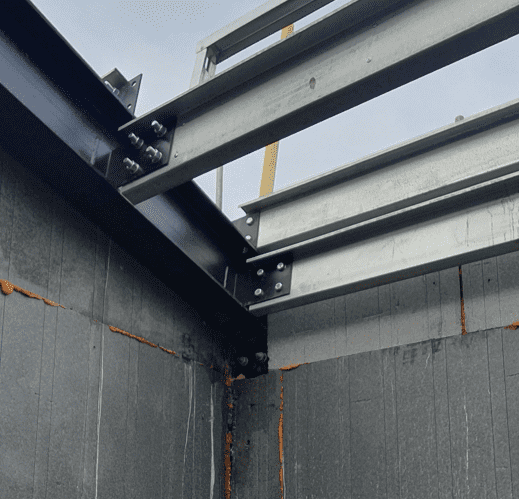
Steel portal frame construction has traditionally been the most cost-effective method for building industrial and agricultural units. However, economical ICF costs now offer a competitive alternative.
Most industrial units feature cavity brick walls around the perimeter, typically reaching about 2m high. This creates a strong, secure, and fire-resistant barrier around the ground floor perimeter. Above this, insulated, PVC-covered, trapezoidal steel panels extend up to the eaves and across the roof. This construction method requires pad foundations to support the portal frame stanchions.
The whole construction process can be sped up by using strip footings and ICF walls up to eaves level. The steel rafters of the portal frames are then bolted to the reinforced ICF walls that replace the steel stanchions of the portal framed alternative.
The ICF walls can be rendered to provide a fast economic way of finishing the buildings. When agricultural buildings are required to store crops the ICF can be lined with stainless steel sheets and expensive concrete retaining walls are just not required. Economical ICF costs now makes this form of construction very competitive.
Retaining Walls Costs
Garden Retaining Walls
ICF walls provide an extremely economic and rapid way of building garden walls and gravity type retaining walls up to about 3m high.
ICF can be finished with render or brick slips and will always cost a fraction of the amount that walls built with shutters or brick walls will cost.
Embedded Retaining Walls
Economical ICF costs make this type of wall very economic when a higher wall is required with good ground conditions. These are built by excavating a trench, installing a strip footing and adding ICF up to the required height. The trench is then filled so the embedded length of the wall holds the cantilever section of the wall in place.
High Retaining Walls & Limited Access
In back gardens with limited access or where the wall height is higher than 3m, king post walls built with ICF will often provide the cheapest solution.
In practice this is a simple, very economic way of building high retaining walls of any length.
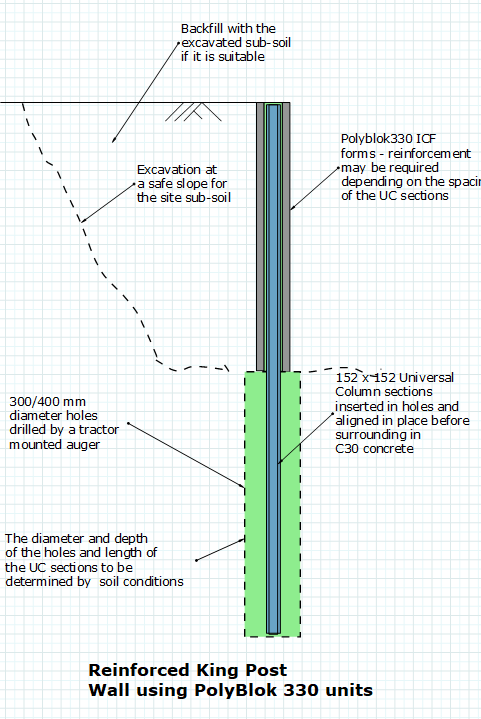
Build smarter: stay up to date with the latest industry news & icf insights
Subscribe to our newsletter for exclusive Insulated Concrete Formwork construction insights, key industry developments and updates on the constantly evolving landscape of house building in the UK.
